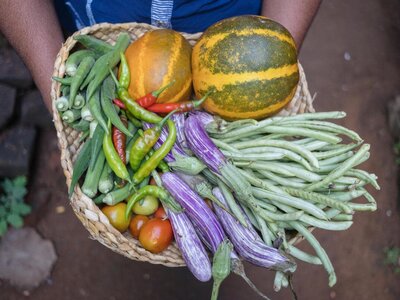Market analysis
- 1,535
- markets for which WFP monitors food-price data
- 33
- Market Monitors published since 2008
- 128
- WFP market assessment reports available on vam.wfp.org since 2006
How do price fluctuations and spikes affect people’s food security? Are cash-based transfers the best way to assist those in need? What are the effects of different types of assistance on markets and families? Should food be procured internationally or locally? Understanding how local economies and markets function enables the World Food Programme (WFP) to identify the best ways to assist people in need and maximize the positive impact of its work.
WFP’s market assessments combine market-related data on prices, food availability and supply chains with the analysis of macroeconomic factors and government policies. Economic growth trends, exchange rate fluctuations, imports and exports, employment and inflation are key indicators. Additionally, geospatial information helps to analyze access to markets, including distances, and how insecurity or weather-related events, such as flooding, affect access.







